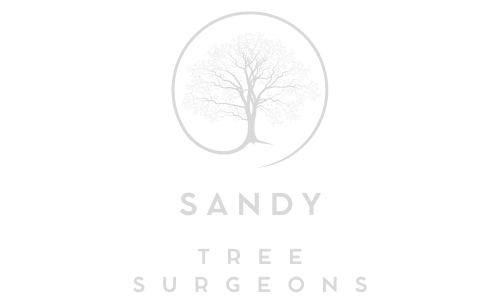Tree Crown Reduction: Assessing the Structural Integrity of Trees Before Pruning
Introduction: At Sandy Tree Surgeons, we recognise the importance of assessing a tree’s structural integrity before pruning, especially tree crown reduction. Proper assessment ensures that pruning activities enhance the tree’s health and safety without compromising its structural stability. This blog post will delve into the significance of assessing tree structure before crown reduction and provide valuable insights for effective tree care management.
Understanding Tree Crown Reduction
Tree crown reduction involves selectively pruning branches and foliage from a tree’s upper canopy. This technique reduces the tree’s overall size, weight, and wind resistance while promoting better light penetration and air circulation. Properly executed crown reduction enhances the tree’s aesthetic appeal, improves its structural integrity, and reduces the risk of branch failure.
Importance of Structural Assessment
1. Identifying Weaknesses and Defects
Before undertaking any pruning, assessing the tree for potential weaknesses and defects is crucial. These may include:
- Cracks and Splits: Visible cracks or splits in the trunk or major limbs can indicate structural weaknesses.
- Cavities and Decay: Internal decay or hollow areas within the tree can compromise strength and stability.
- Co-dominant Stems: Trees with multiple co-dominant stems may be prone to included bark, where bark grows inward between the stems, weakening their attachment.
- Root Issues: Root damage or decay can affect a tree’s stability and health.
Identifying these issues allows arborists to develop a targeted pruning plan that addresses specific structural concerns while promoting tree health.
2. Assessing Risk Factors
Structural assessment helps arborists evaluate the risk factors associated with the tree and its surroundings. Factors such as the tree’s proximity to buildings, power lines, or high-traffic areas influence pruning decisions. Trees with significant structural defects may require more conservative pruning or additional support systems to mitigate risks effectively.
3. Preserving Tree Health
Effective structural assessment ensures that pruning activities support the tree’s long-term health and vitality. By identifying and addressing structural weaknesses early, arborists can implement appropriate pruning techniques that promote healthy growth and minimise stress on the tree. This proactive approach helps maintain the tree’s natural form and resilience to environmental factors.
Steps for Structural Assessment Before Pruning
1. Visual Inspection
Begin by thoroughly visual inspecting the tree, assessing its overall form, bark condition, and the presence of any visible defects. Look for signs of stress, disease, or damage affecting its structural integrity.
2. Conducting a Resistograph or Sonic Tomography
Consider using advanced diagnostic tools such as a seismograph or sonic tomography for a more in-depth assessment. These tools help identify internal decay, cavities, or structural weaknesses that may not be visible outside.
3. Consulting with a Professional Arborist
Engage the expertise of a qualified arborist, like those at Sandy Tree Surgeons, for a comprehensive structural assessment. Arborists have the knowledge and experience to identify potential risks and develop tailored pruning strategies that promote tree health and safety.
4. Developing a Pruning Plan
Based on the assessment findings, develop a detailed pruning plan that addresses specific structural concerns while achieving the desired aesthetic and functional outcomes. Prioritise safety and tree health throughout the planning process.
Conclusion: Assessing the structural integrity of trees before crown reduction is essential for effective tree care management. Arborists can enhance tree health, promote structural stability, and mitigate potential risks by conducting thorough assessments and developing targeted pruning plans.
Call us on: 01767 668 993
Click here to find out more about Sandy Tree Surgeons
Click here to complete our contact form and see how we can help you with your tree’s needs.

